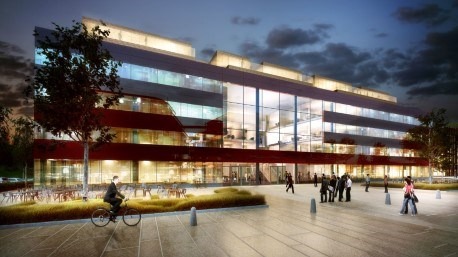General information
A Working Lab is an office building for collaboration and innovation in civil engineering. Here, workplaces and learning environments are created that take advantage of the possibilities of digitization and meet the users' needs for flexibility and efficiency. It is also a physical link between academia, business and society that provides the conditions for new companies and organizations to establish themselves in connection with Chalmers. The building is certified Miljöbyggnad Gold and since its opening in autumn 2019 is part of the Johanneberg Science Park at Chalmers in Gothenburg.
The innovation arena in community building and learning environments
The house is a living environment for innovation where Akademiska Hus, together with tenants and researchers, tests and takes part in the latest in research and development. Even the path to a finished building has been an innovation process. Sixteen innovation projects drove the work forward with a clear climate and sustainability focus during the construction process, and A Working Lab is today Akademiska Hus' most intelligent building. Examples of projects that were run are direct current from solar cells with battery storage, reduced climate impact in the construction phase, acoustics in wooden frames and construction without weather tents.
A Working Lab is both public and private. Flow is of great importance for creativity in order to maximize the number of creative clashes between people with different skills and backgrounds. The entrance level is open to the university, the square and public transport. In the entrance, visitors are greeted by a lively area with a restaurant, meeting places and workplaces.
The building also houses Akademiska Hus' campus-close service offer and concept for co-working, makerspace, short contracts, Learning Lab and flexible meeting places. The Learning Lab is a lab for learning and meetings and has been formed to explore, challenge and develop the learning environments of the future. Three rooms with different character and endless opportunities to test how environment-creating factors such as sound, light, decor and digital tools can affect learning, creativity and results. Read more and book here!
